Sea bunny is not a real rabbit. It is a super cute sea slug that belongs to a wild group of mollusks. A Japanese diving team released a sea bunny video in 2015 and since then most aquarists try to find them. I know you must have a lot of questions about the sea bunny slug. You do not have to read a lot to find the answers. I have done it for you. I read a lot and here I present what I found about sea bunnies.
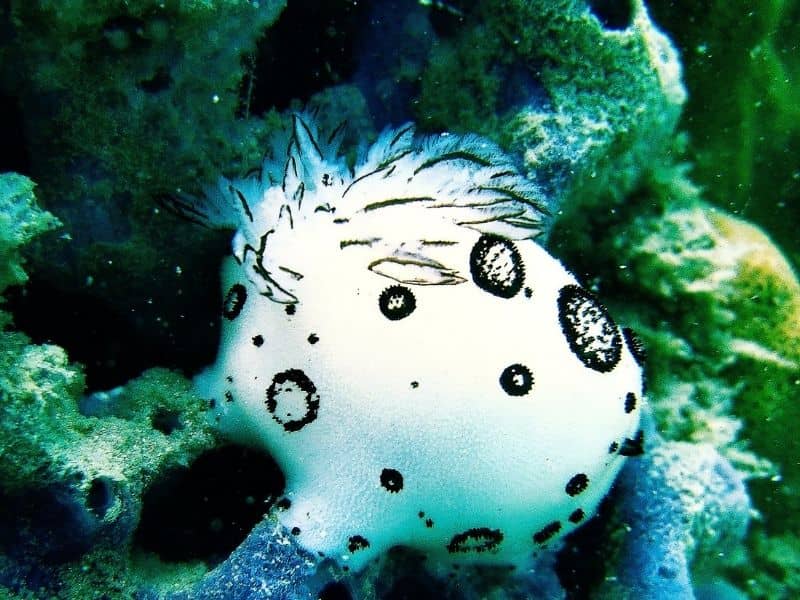
What is a sea bunny?
Jump To
- 1 What is a sea bunny?
- 2 Can you have this sea slug as a pet?
- 3 appearance of this bunny
- 4 How many types of sea bunnies are there?
- 5 sea bunny size
- 6 Ears, tail, and fur of sea bunny slug
- 7 sea bunny slug habitat
- 8 What they eat
- 9 Male and female sea bunny
- 10 How do sea bunnies reproduce?
- 11 The behavior of sea bunny: according to science
- 12 Life span
- 13 Are sea bunnies poisonous?
- 14 Predators of sea slug
- 15 Do Sea bunnies live in coral reefs?
- 16 Are sea slugs endangered?
First I found their scientific name as Jorunna parva. Moreover, scientists categorize these animals under the group called Nudibranch. Nudibranchs are a shellless gastropod Molluscan that belongs to the family Discodorididae. sea bunny slug is a little creature that has a fluffy look. Also, they have wiggly little ears, tails, and black color dots that cover the whole body.
They have white, yellow, or orange body with black spots. Their outer cover looks like fur. But they do not have actual fur. Those are the structures that contain sensory organs. Most predators stay away from them. Because they are incredibly toxic. This little creature can grow around one inch in the wild. The lifespan of a Jorunna parva is relatively short. They live for several months or maximally one year. In the wild, they are found in the Indo-Pacific Ocean from South Africa to the central pacific.
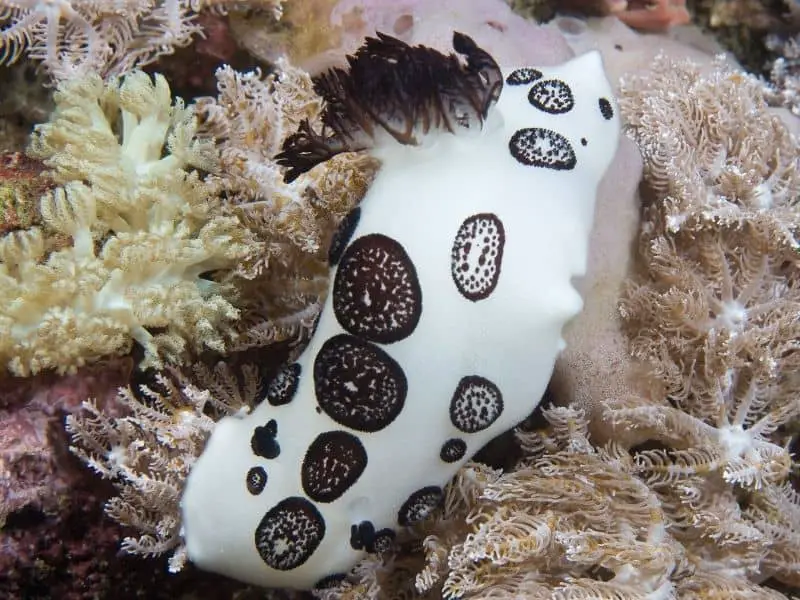
Can you have this sea slug as a pet?
I am sure you have looked for an answer to this question in so many places. So this is the answer. It is not recommended to have a sea bunny as a pet in your saltwater aquarium. I know this is not the answer you looked for. But there are a few reasons why you should not keep them as pets. The first reason is, that they are an extremely toxic slug variety. Thus, rearing them in your aquarium is not safe.
Further, feeding Nudibranchs in the aquarium is quite difficult. They mainly eat sea sponges as a main part of their diet. Thus, you should have a method to supply sponges to them, if you wish to rear sea bunny slug. Sea sponges also contain toxic compounds. If Jorunna parva ‘ secretions are dissolved in water, every live creature in your tank may die. Moreover, they will get sucked into the powerheads and filter systems of your tank.
appearance of this bunny
Although you can not keep sea bunnies as pets it is worth knowing further about these cuties. Sea Bunny (as the name implies) is a cute little thing that has a soft cottony appearance. Their body coat is like fur. Additionally, bunnies have different color body coats. They have ear-like structures on the top of their head. The posterior body of the bunny contains a tail-like structure. But it is not an actual tail. It is their Gill and it is used for respiratory purposes.
Further, they have black spots on their outer body. They grab sensations from black spots and ear-like antennas. Jorunna parva do not have eyes. This slug is a shell-less variety. Their body size is around one inch or less than an inch.
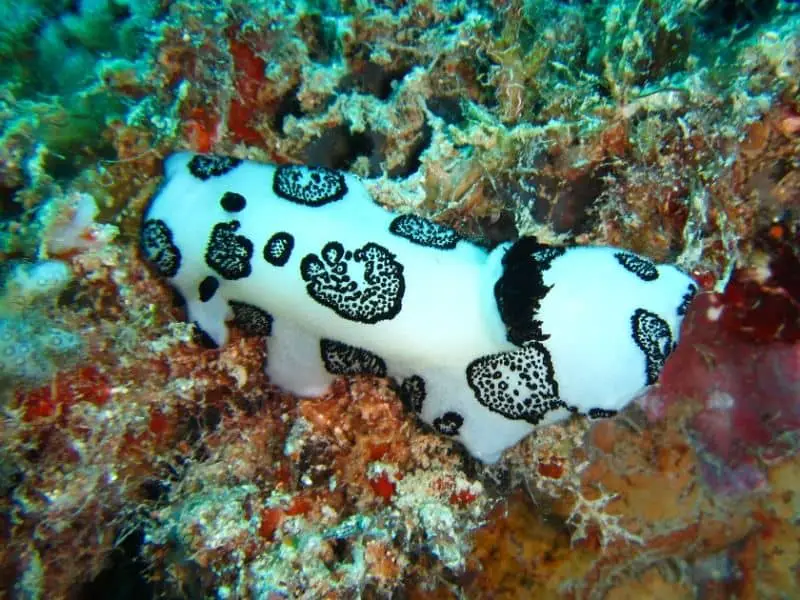
Different color varieties
In the wild, sea bunnies have some different color varieties. These are,
- White color
- Yellow color
- Bright Orange color
- Brown color
When comparing the above varieties, the only difference is their outer appearance. because their whole body functions and behaviors are the same.
How many types of sea bunnies are there?
The Sea bunny is a member of 16 species of the Discodorididae family. Among these sea bunny species below are the bunny’s close cousins.
Jorunna Funebris (Dotted nudibranch )
This species is known as a dotted nudibranch. It is a dorid nudibranch. That means these sea slugs are shell-less marine gastropods that belong to Mollusca. The dotted nudibranch has a fluffy look and a fleshy oval body. Mostly their body colors are white. They are one of the largest slug varieties of the Discodorididae family. Their body size ranges from 1 to 6 centimeters wide. Dotted nudibranchs have black circle markings on their body. These markings are made up of black bristles called “caryophyllidia”. Dotted nudibranchs are inhabited in Indo-Pacific regions.
They are commonly found in countries such as,
- Sri Lanka
- Australia
- New Caledonia
This slug also feeds on a variety of sponges.
Jorunna Tomentosa
This slug species has a yellow to sandy brown color body. They have a mantle and it has a velvety look. The mantle consists of several pairs of dark brown spots. Generally, they can grow around 5.5 cm. This dorid nudibranch gastropod is commonly found in European waters such as:
- Norway
- Portugal
They also reported in,
- Mediterranean Sea
- South Africa
- Tristan da Cunha
sea bunny size
Jorunna parva are cute little creatures. They can maximally grow around 1 inch (2-2.5 cm) in the wild.
Related : How Big Do Clownfish Get? Size Comparison on Each Species.
Related : Can Clownfish Change Gender? Interesting Facts You Must Know
Must See : How Much Do Clownfish Cost By Type? Must-Know Things
Ears, tail, and fur of sea bunny slug
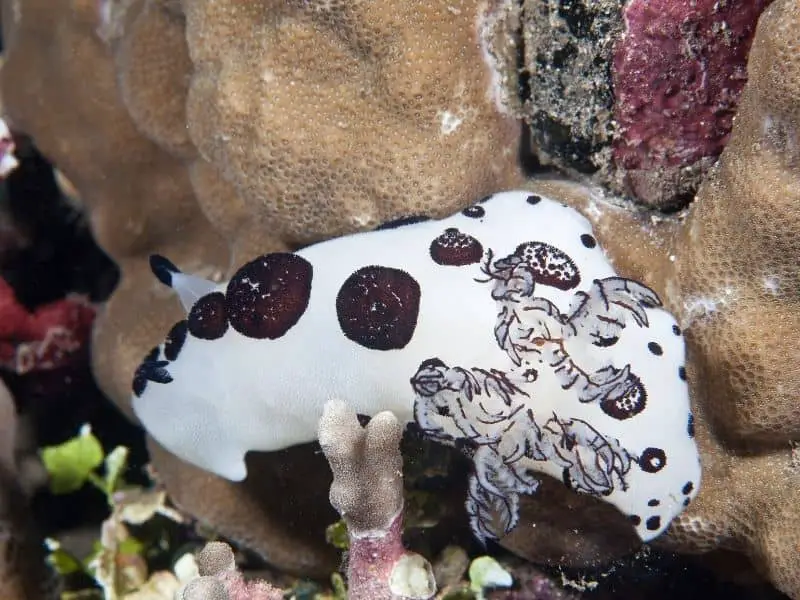
The Sea bunny is equipped with two antenna-like “ears” and a fluffy “tail”. Sea bunnies have a soft cottony outer appearance. But their body coat does not cover them with actual fur. You can see the black spots that spread across the sea bunny’s body. These structures are called “Caryophyllidia”.
Their furry appearance comes due to the Caryophyllidia. Those black spots also function as sensation receptors. These structures increase the body surface of the bunny. Bunny’s outer body has different colors like yellow, orange-brown, and white. Further, this saltwater bunny has no actual ears. They are the sensory organs. They are called “Rhinophores”. The ear-like structure allows them to find,
- Foods
- Potential mates
- Chemical scents in the water column
Jorunna parva have a flower-like structure on the posterior side of their body. People identify it as a tail. But it is not an actual tail. It is a gill that facilitates respiration. This little beauty does not have eyes.
sea bunny slug habitat
They are native to Indo pacific regions. But they are commonly found in the ocean of the following countries.
- Japan
- Philippines
- Australia
- Tanzania
- Papua New Guinea
- Seychelles
- Reunion
What they eat
In the wild, they mainly eat sea sponges. Sea sponges also contain toxic and bunnies grab and accumulate these toxins in their body.
Male and female sea bunny
The Sea bunny is a hermaphrodite. They have both male and female reproductive organs in the same animal. But they cannot fertilize their eggs by themselves. They need the sperm of another animal to fertilize their eggs.
How do sea bunnies reproduce?
In the mating process, two bunnies are attached to exchange their sperm. Because of their well-developed sensory system, they can lay their partners’ bodies. Sea bunnies have long copulatory spines to inject sperm into the partner’s body. This long spine also ensures that they are attached till sperm exchange is done.
When they are mating, both parents exchange sperm and fertilize their eggs by using these sperm. Because of this trait, they can be a mother of their babies and a father of someone else’s babies. These both Jorunna parva’ offspring are siblings.
The behavior of sea bunny: according to science
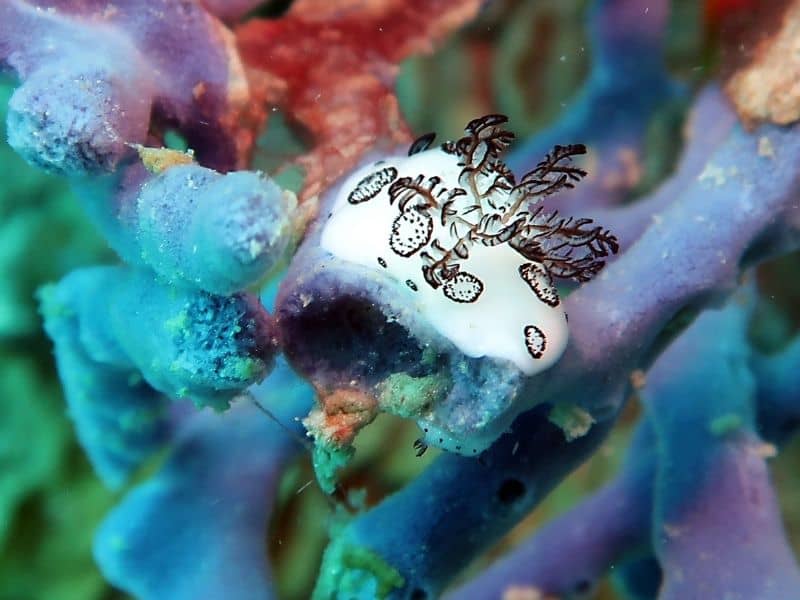
bunnies are not fast swimmers. They have very slow movements. Sea bunnies can identify food availability and water currents using their sensory organs. They are the animals that search for food throughout the day. They always act hungrily. Thus, they are mainly associated with the areas that have enough food. They can find their partners also using sensory signals. They have a good mechanism to protect from predators. If some predators try to attack them, the bunny sprays their toxins to protect them.
Life span
This little slug does not have a long life span. They can live only a couple of months to a year. Because of their short life span, they have an isolated lifestyle. Further, their extremely developed sensory system helps them to mate. Sea bunnies quickly produce their offspring before they die. That behavior helps maintain their population in the ocean.
Are sea bunnies poisonous?
These sea slugs are known as “dorid nudibranchs” and this variety grabs toxins compounds from their foods. According to various science reports, bunnies often eat sponge varieties that contain the toxin. Further, sea bunnies can steal stingers out from Jellyfish. Bunnies use those stingers for their defense. The marine predators stay away from them because sea bunnies are extremely toxic.
Predators of sea slug
There are extremely toxic compounds hiding in this small beauty. Therefore, predatory activities are minimal for them. If some fish try to eat them, bunny sprays are toxic to them. If any predator bites a sea bunny, the toxic compounds will be released from the bunny’s body. Then predators will die because of the toxicity.
Do Sea bunnies live in coral reefs?
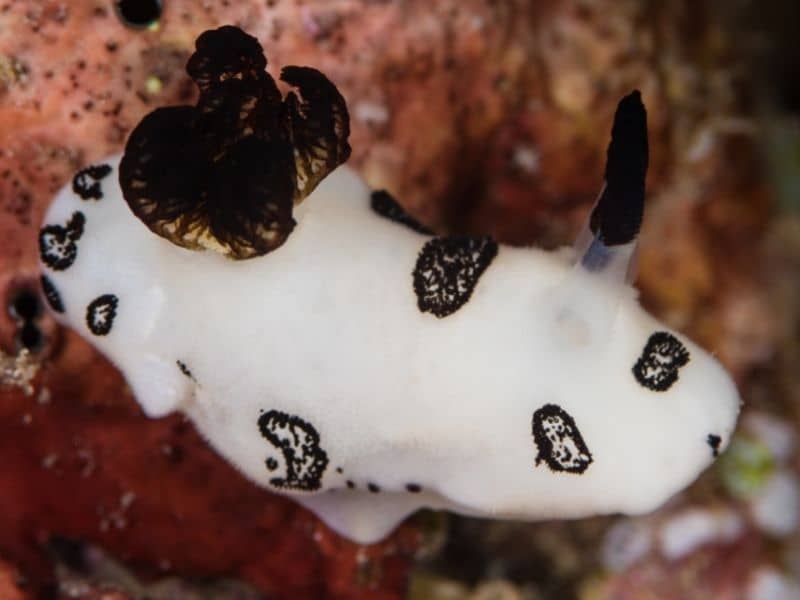
Sea bunnies are found in many marine habitats throughout the world. They inhabit up to 20 meters depth of ocean excluding marine pools and estuaries. Sea bunnies spend their lives primarily on the seafloor where they have sufficient food. Further, Jorunna parva likes to inhabit tropical waters and coral reef areas. Because coral areas are rich with sea sponges. bunnies love to inhabit places where their foods are highly available.
Are sea slugs endangered?
Sea slugs are not categorized as endangered species. Because they are commonly found in tropical waters of the Indo-Pacific region.
Read More : Garden Eel (Heterocongrinae) | Care & 11 Must Know Facts
